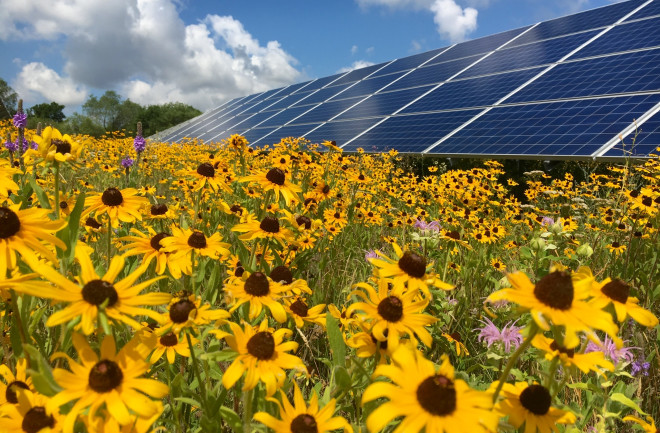Developer Queequeg Renewables is working with environmental consultancy Biodiverse Consulting to strengthen biodiversity measures in five solar and battery energy storage system (BESS) projects.
Biodiverse Consulting will specifically support Queequeg in achieving the necessary biodiversity net gain (GNG) for projects, a requirement set out in the Environment Act in 2021 and which came into effect in February 2024.
The law ensures that developments that impact wildlife habitat are left in a measurably better condition than before, by at least 10%.
The two companies also highlighted the potential contribution that solar panels can make to improving local biodiversity. For example, it can enable the creation of wildflower meadows and grasslands, maintain and support new hedgerow growth, and promote and conserve new wetland habitats.
Commenting on the partnership, Chris Binns, UK planning director at Queequeg Renewables, said: “Well-designed and managed solar farms in particular contribute to a range of important ecosystem features. They can support sustainable agriculture, regulate air quality, reduce flood risk, generate new habitats and reduce CO2 emissions.
“The solar panels themselves are installed on poles, meaning there is minimal disturbance to the ground – typically only around one to two percent of the total site area. This means that the remainder of the land is available for sheep grazing and for actively improving the local environment through wildflower meadows or rewilding.”
Biodiversity is increasingly becoming an integral part of UK solar and BESS projects
The findings from both Queequeg Renewables and Biodiverse Consulting reiterate some of the conclusions drawn by Solar Energy UK in a study published in March 2024 called Solar Habitat 2024: Ecological trends on solar farms in Great Britain.
The study highlighted that solar farms can become ‘safe havens for biodiversity’ and play an ‘important role’ in nature recovery. The study analyzed a total of 87 solar sites in 2023 using a standardized methodology, which Solar Energy UK helped develop with Lancaster University in 2022.
Their findings showed that vulnerable Red List species such as skylarks are among the most common wildlife on UK solar farms. Yellowhammers, linnets and starlings – all red-listed bird species – were also present at the observed basking sites.
On the ground, brown hares, a species under conservation, made up 40% of mammal observations at the 87 sites observed.


